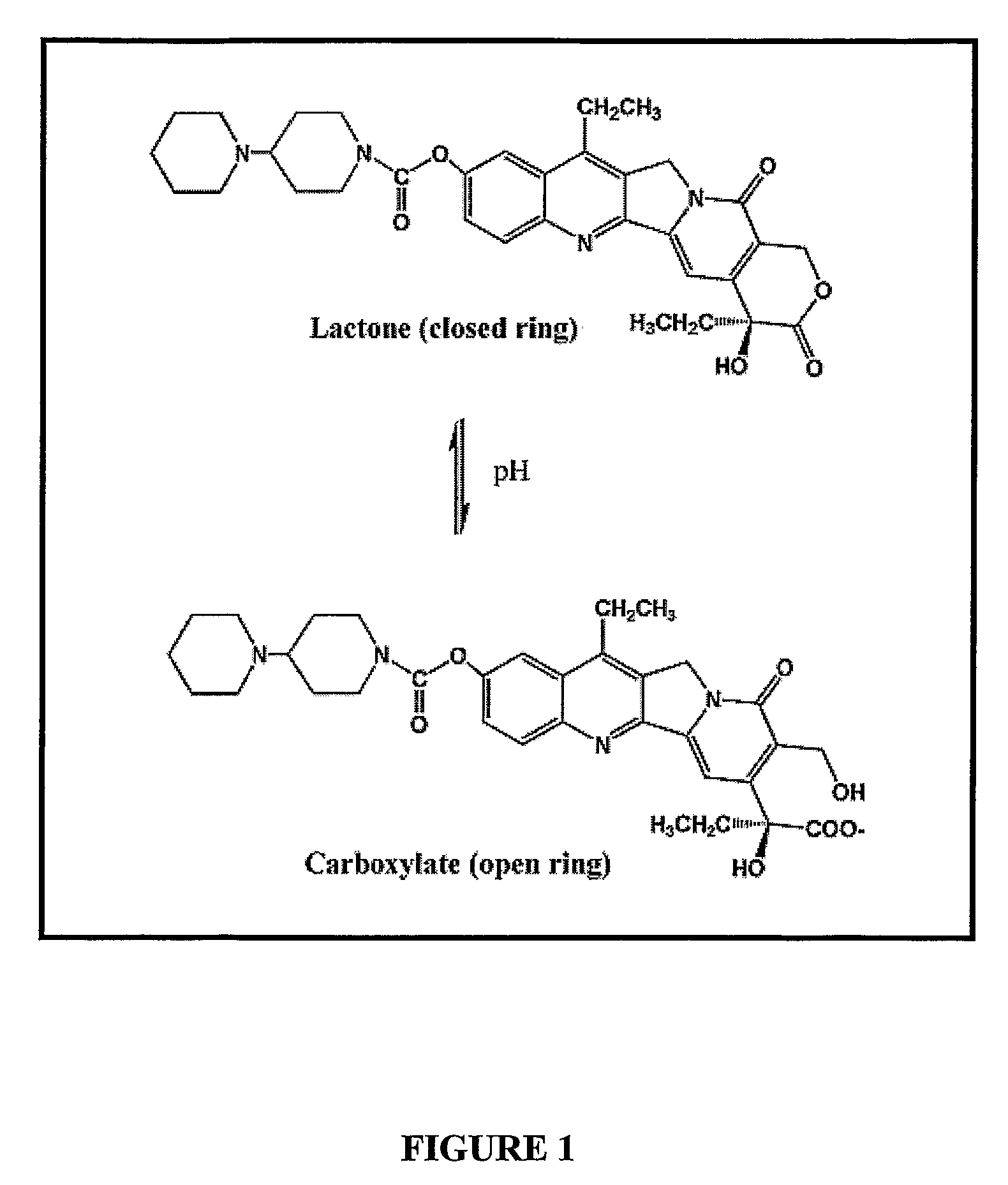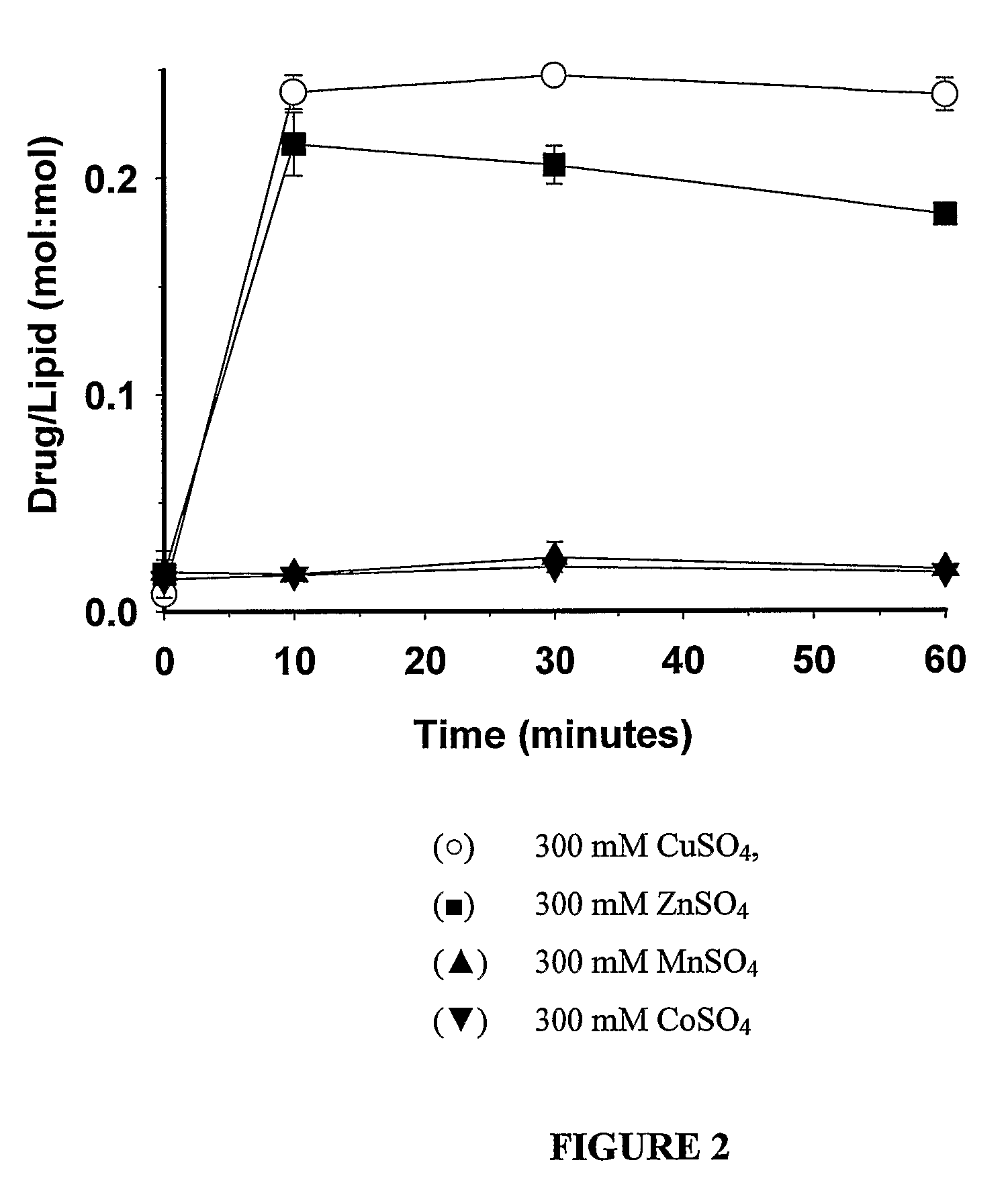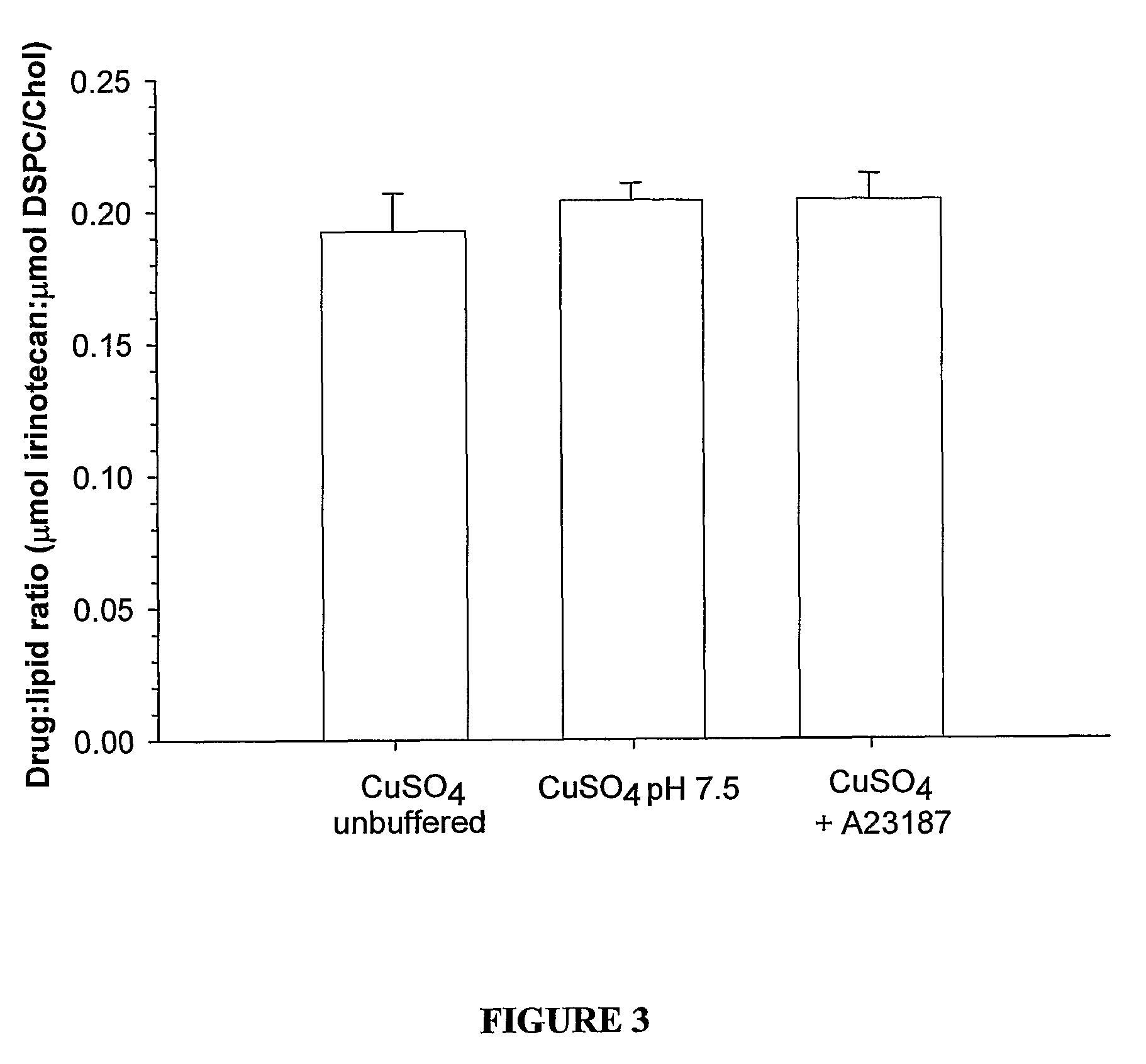Liposomes with improved drug retention for treatment of cancer
a technology of liposomes and cancer, applied in the field of liposome drug loading methods and compositions, can solve the problems that the liposome encapsulated metal ions in these applications are not employed for drug retention purposes, and achieve the effect of enhancing the retention of therapeutic agents
- Summary
- Abstract
- Description
- Claims
- Application Information
AI Technical Summary
Benefits of technology
Problems solved by technology
Method used
Image
Examples
example 1.0
1.1 Materials and Methods
1.1.1 Liposome Formation
[0046]DSPC / Chol (55:45 mol %) large unilamellar vesicles (LUVs) were prepared by the extrusion method. Briefly, lipids were dissolved in chloroform at the required molar ratio, labelled with the non-exchangeable, non-metabolizable lipid marker, 3H-CHE and dried to a thin film under a stream of nitrogen gas. Subsequently, the lipid was placed in a high vacuum for 3 hours to remove any residual solvent. The lipid films were then hydrated at 65° C. by mixing with the appropriate buffer (300 mM CuSO4, 300 mM CoSO4, 300 mM ZnSO4 and 300 mM MnSO4). The mixture was subjected to five cycles of freeze-and-thaw (5 minutes each, freezing in liquid nitrogen and thawing at 65° C.). The formed multilamellar vesicles (MLV's) were extruded 10 times through stacked polycarbonate filters of 0.1 μm pore size at 65° C. (Extruder, Northern lipids). The resultant LUVs typically possessed mean vesicular diameters in the range 110 nm±30 nm. The LUVs' externa...
example 2.0
[0066]FIGS. 19 and 20 illustrate drug to lipid ratios in the plasma following in vivo administration to Rag-2M mice. In each case the administered formulations consisted of the same liposome composition with different internal solutions as indicated in the figure legends. In the case of both the drug irinotecan (FIG. 19) and vinorelbine (FIG. 20) the formulation prepared by Cu2+ / A23187 drug loading technology demonstrated significantly better plasma drug retention as indicated by the higher relative drug-to-lipid ratios.
2.2 Pharmacokinetic Parameters of Different Irinotecan Treatments
[0067]FIG. 21 is a table similar to FIG. 18 summarizing pharmacokinetic parameters of different irinotecan treatments. The delay in tumour growth was most effective in the case of the formulation prepared by Cu2+ / A23187 drug loading technology. In FIG. 21, irinotecan plasma-area-under-the-curve (AUC) was calculated using WinNonLin pharmacokinetic software (noncompartmental model...
PUM
| Property | Measurement | Unit |
|---|---|---|
| pH | aaaaa | aaaaa |
| pH | aaaaa | aaaaa |
| pH | aaaaa | aaaaa |
Abstract
Description
Claims
Application Information
 Login to View More
Login to View More - R&D
- Intellectual Property
- Life Sciences
- Materials
- Tech Scout
- Unparalleled Data Quality
- Higher Quality Content
- 60% Fewer Hallucinations
Browse by: Latest US Patents, China's latest patents, Technical Efficacy Thesaurus, Application Domain, Technology Topic, Popular Technical Reports.
© 2025 PatSnap. All rights reserved.Legal|Privacy policy|Modern Slavery Act Transparency Statement|Sitemap|About US| Contact US: help@patsnap.com



